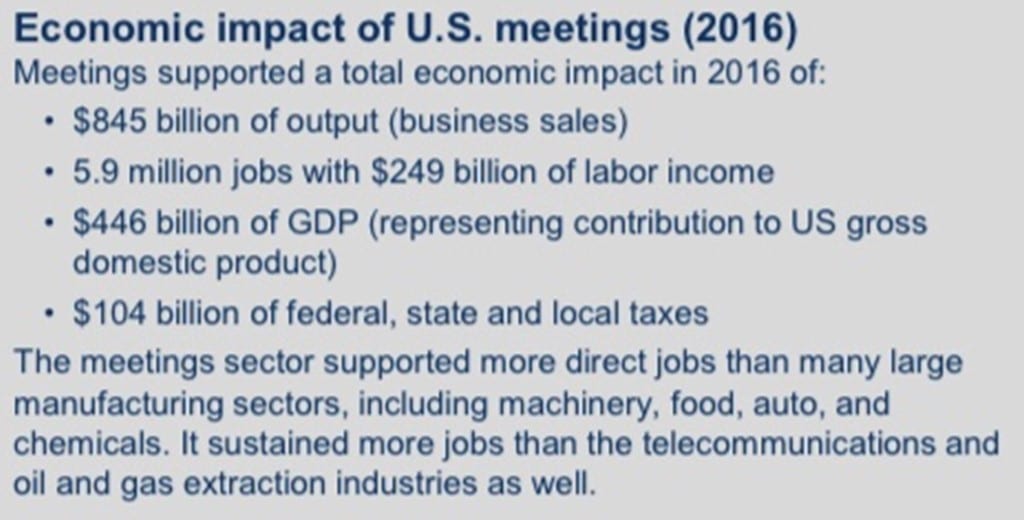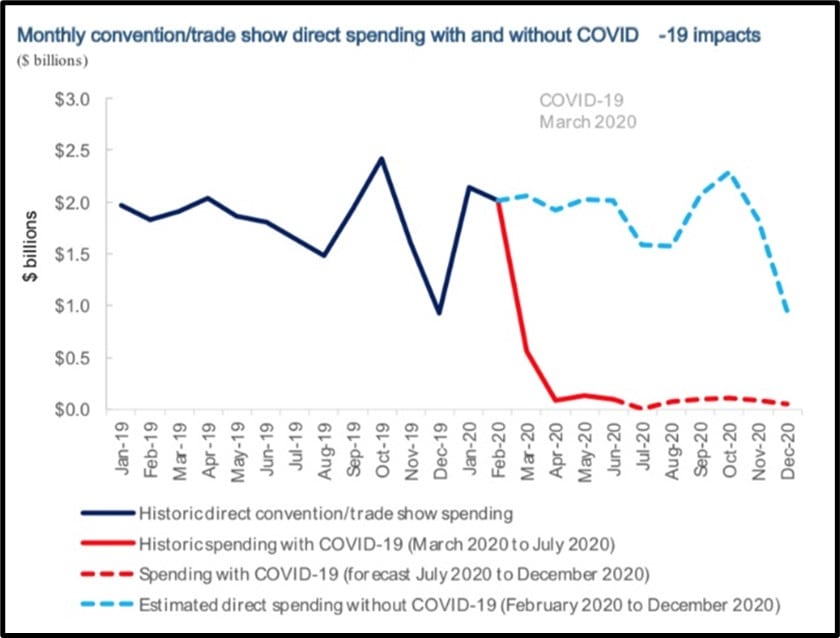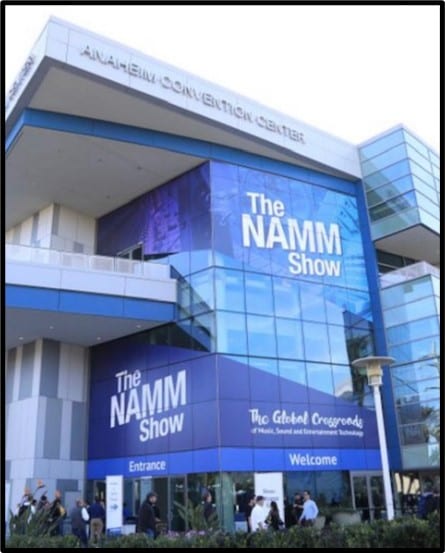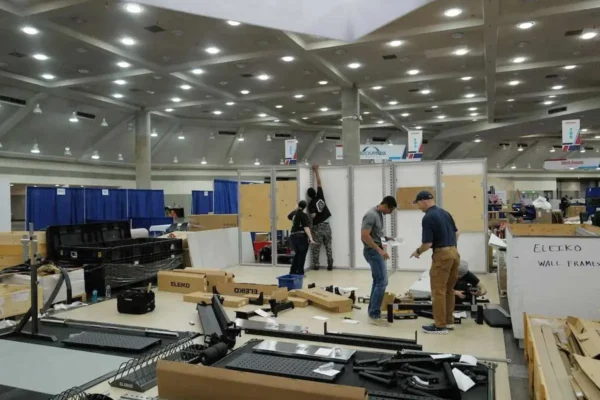Except for those who work in it, few understand the importance of tradeshows and events. They create jobs, produce sales and generate tax revenues.

The Events Industry Council, in 2018, released an analysis of business meetings. The summary (pictured right) clearly proves the industry’s extraordinary impact—these are huge numbers!
Some additional statistics and observations from other studies state:
** 251,236,000 attendees traveled to business meetings in 2016, which would make it the fifth largest country in the world
** 81.3 million people attended more than 11,400 business events in the U.S. in 2019
** The U.S. tradeshow industry is larger than the U.S. auto industry
** The convention industry lost at least 2.8 million jobs in 2020
California lost billions of dollars of convention spending monthly as a result of the lockdowns. In 2019, California attracted 12.9 million convention visitors, and each one spent, on average, $1,744 for their multi-day stay (in addition to the convention itself, money is spent locally on lodging, food, entertainment, and travel—both within, and to and from—the city). Spending creates jobs, which creates additional spending, which helps to support additional jobs. And all of that creates additional tax revenues. The events industry contributed $130 billion in federal, state and local tax revenues in 2019.

It’s not just the economic impact—tradeshows create other benefits. Companies display products, develop business and promote brands. Attendees gather to network, learn and evaluate products. Tradeshows transform an empty convention center into a marvelous marketing extravaganza, and can even help change the world we live in.
Think of any invention—any prominent brand—and chances are it’s been displayed and promoted at a tradeshow. Photography, movies, elevators, electricity, bicycles, automobiles, telephones, typewriters, repeating revolvers, nylon, plastic, rubber, washing machines, sewing machines, flush toilets, computers and more. All of these were displayed and promoted at tradeshows.

Tradeshows are immense and long-lasting. Half of the top 40 tradeshows in 2019 have been in existence for at least 50 years. One of the oldest, the National Association of Music Merchants, held its first show in 1901. In 2019, in Anaheim, NAMM was the 19th largest tradeshow in the country: it covered 616,065 net square feet, had 1,917 exhibitors and attracted 115,303 attendees. The summer 2020 show and the winter 2021 show were cancelled due to the lockdowns. Summer NAMM 2021 will be in Nashville in July.
CES, in its 52nd year in 2019, had 2.9 million net square feet of exhibit space, 4,550 exhibiting companies, and 175,212 attendees. Think about the size of those numbers.
Meetings mean business—big business! The industry is an economic engine that drives corporations, creates jobs and fuels local economies. But like the air around us, its importance and impact is often unnoticed and unappreciated.
It is time for this industry to be invisible no longer.

Bob McGlincy is director, business management at Willwork Global Event Services. Willwork creates engaging, energized and exceptional event experiences. Contact him at Bob.McGlincy@willwork.com.
This story originally appeared in the May/June 2021 issue of Exhibit City News, p. 14. For original layout, visit https://issuu.com/exhibitcitynews/docs/ecn_may-june_2021






























